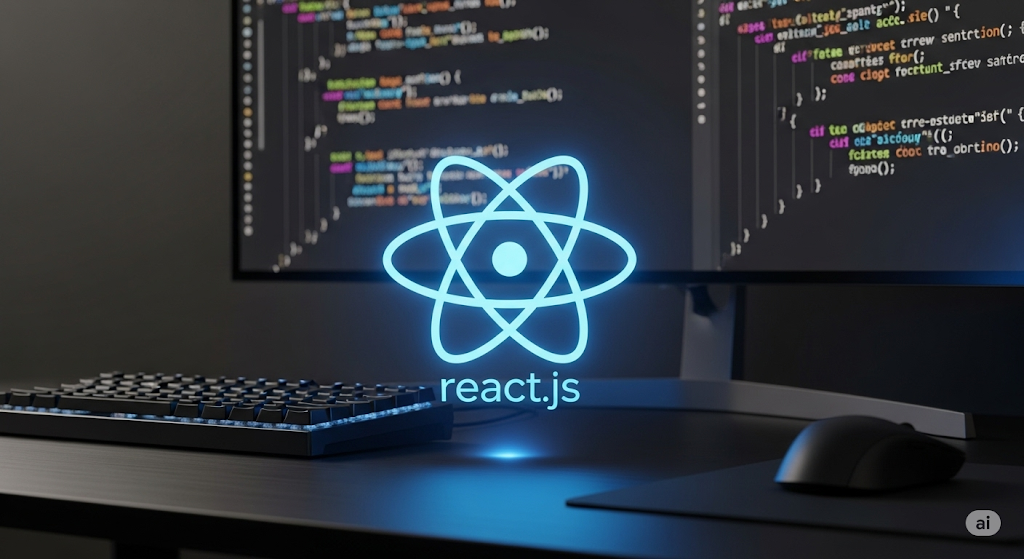Are you looking to build modern, fast, and dynamic user interfaces? If so, you’ve come to the right place. This React tutorial for beginners is designed to give you a clear and simple introduction to one of the most popular JavaScript libraries in the world.
We’ll break down the core concepts without overwhelming you. By the end of this guide, you’ll understand what React is, why it’s so powerful, and how to start your very first project.
What is React and Why Should You Use It?
React, often referred to as React.js, is an open-source JavaScript library developed by Facebook. Its primary purpose is to help developers build user interfaces (UIs) or UI components. Think of it as a tool for creating the interactive parts of a website you see and click on, like buttons, forms, and navigation menus.
So, why is it so popular? React allows developers to build complex UIs from small, isolated pieces of code called “components.” This component-based architecture makes your code more organized, reusable, and easier to manage as your application grows.
Key Benefits of Using React:
- Component-Based: Build encapsulated components that manage their own state, then compose them to make complex UIs.
- Declarative: You tell React what you want the UI to look like, and it handles the “how” of updating the screen efficiently.
- Learn Once, Write Anywhere: The skills you learn can also be applied to mobile development with React Native.
Understanding SPAs (Single Page Applications)
React is the perfect tool for building a Single Page Application (SPA). An SPA is a web application that loads a single HTML page and dynamically updates content as the user interacts with it, without reloading the entire page.
This approach provides a much smoother and faster user experience, similar to a desktop or mobile app. When you click a link in an SPA, React just fetches the necessary data and updates the relevant parts of the page, making it feel incredibly responsive.
Setting Up Your React Development Environment
Getting your computer ready for React development is easier than ever. You just need two main things installed: Node.js and npm (Node Package Manager), which comes bundled with Node.js.
Here’s the simplest way to get a new React project running:
- Install Node.js: If you don’t have it, download and install it from the official Node.js website.
- Open Your Terminal: Open Command Prompt (Windows) or Terminal (macOS/Linux).
- Run the Create React App command: Type the following command and press Enter. Replace `my-first-app` with your desired project name.
npx create-react-app my-first-appThis command sets up a complete React development environment with all the necessary tools and configurations. Once it’s done, navigate into your new project folder (`cd my-first-app`) and run `npm start` to see your new React app live in your browser!
Exploring JSX and How It Works
When you open your first React component file, you’ll see something that looks like HTML mixed inside JavaScript. This is what is JSX, or JavaScript XML.
JSX is a syntax extension for JavaScript that makes writing React components feel intuitive. Instead of using complex functions to create elements, you can write them in a familiar, HTML-like structure.
For example, here’s a simple JSX element:
const element = <h1>Hello, world!</h1>;Your browser doesn’t understand JSX directly. Behind the scenes, a tool called a compiler (like Babel) transforms this JSX code into regular JavaScript that browsers can read and execute.
Conclusion: Your Journey with React Begins!
Congratulations! You’ve just taken your first step into the world of React. We’ve covered what React is, its core benefits, the concept of SPAs, how to perform a basic setting up react environment, and what JSX is.
This foundation is the key to building amazing web applications. The best way to learn is by doing, so try creating your first component or modifying the app you just created. Your journey as a React developer starts now!
Frequently Asked Questions (FAQ)
Q: Is React a framework or a library?
A: React is officially a JavaScript library for building user interfaces. While it can feel like a framework, it primarily focuses on the “view” layer of an application, giving you more flexibility to choose other tools for things like routing and state management.
Q: What is the difference between React and React Native?
A: React (or React.js) is used for building web applications that run in a browser. React Native uses the same core principles but is designed for building native mobile applications for iOS and Android.
Q: Do I need to be a JavaScript expert to learn React?
A: You don’t need to be an expert, but a solid understanding of fundamental JavaScript concepts (like variables, functions, arrays, objects, and ES6 features like `const`/`let` and arrow functions) is highly recommended before you start this React tutorial for beginners.


